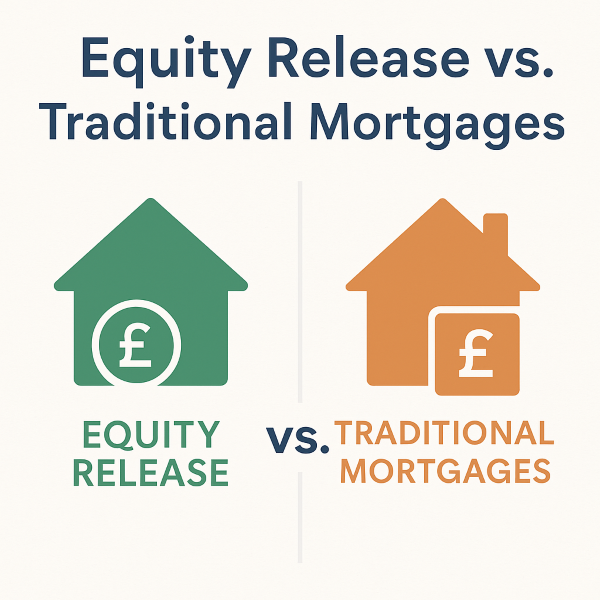Equity release provides a way for homeowners in the UK to access tax-free cash tied up in their property. Many choose this option to pay off debts, support family members financially, or fund home improvements. This article explores equity release, its workings, and whether it might be suitable for you.
What is Equity Release?
The question of what equity release? In simple terms, it allows homeowners to access the value of their property while continuing to live in it. Two main types of equity release products exist: lifetime mortgages and home reversion plans.
- Lifetime Mortgages: You borrow against your home’s value with this option. Interest is added to the loan, and repayment occurs when the property is sold, usually after you pass away or move into long-term care. Importantly, lifetime mortgages typically offer flexibility. For instance, you can choose to make partial interest payments or let the interest compound.
- Home Reversion Plans: Here, you sell a portion of your property to the provider. While you receive a lump sum or regular payments, you retain the right to live in your home until you pass away or move into care. The provider recoups their share when the property is sold.
Understanding that both options can impact means-tested benefits and inheritance is crucial. A qualified financial adviser can guide you through the decision-making process to ensure you make an informed choice. You can find advisers through platforms like Connect Experts.
Payment Options for Lifetime Mortgages
With a lifetime mortgage, homeowners can access funds in different ways:
- A single lump sum
- Smaller, ongoing amounts
- A combination of both
Interest rates on lifetime mortgages tend to be higher than standard mortgage rates. For instance, rates in 2024 range from 5% to 8%, depending on the provider and terms. Homeowners should carefully consider whether to make monthly interest payments or let the interest roll up, as the latter can significantly reduce the value of their estate.
Minimum and Maximum Equity Release Amounts
The amount you can release depends on your age, property value, and product type. Lifetime mortgages typically require a minimum loan of £10,000. Drawdown facilities may allow smaller increments, often starting at £1,000 per withdrawal.
In contrast, home reversion plans enable you to sell between 25% and 100% of your property’s value. However, the actual amount released is usually less than the market value of the sold share. For instance, selling 50% of a home worth £300,000 might result in a payment of £75,000.
Addressing Common Myths About Equity Release
Many misconceptions surround equity release. Below, we dispel a few common myths:
- “I might owe more than my home is worth.” Products with a No Negative Equity Guarantee ensure you or your heirs will never owe more than the property’s value. However, this guarantee does not cover missed monthly payments on specific plans, like Payment Term Lifetime Mortgages.
- “My partner could lose our home if I move into care.” Equity release agreements usually allow the surviving homeowner to remain in the property until they also pass away or move into care. However, failure to meet payment terms can result in repossession.
- “Once I take equity release, I can’t move house.” Most equity release plans allow you to move, provided the new property meets the lender’s criteria. Discuss portability options with your provider before committing.
- “I must make monthly payments.” Standard lifetime mortgages often let you decide whether to make payments or let the interest compound. Home reversion plans require no monthly payments.
Is Equity Release Right for You?
Determining whether equity release suits your needs depends on several factors:
- Your age (most providers have a minimum age requirement of 55)
- Your property’s value (typically over £70,000)
- Your financial goals (e.g., funding retirement or helping family)
- Your alternative income sources
Qualified financial advisers can help you weigh these considerations. They’ll also ensure you fully understand the long-term impact on your finances and inheritance. You can verify their credential via the Equity Release Council.
In the Main
To summarise, equity release can provide financial flexibility but requires careful planning. Always consult a professional adviser and review terms carefully. Whether you choose a lifetime mortgage or a home reversion plan, understanding the implications will help you make the best decision for your circumstances.
What should I do next?
Richard Jeremiah-Clarke is a member of the Equity Release Council; view his profile here and contact him below.
Thank you for reading our “What is Equity Release? | Comprehensive Guide for 2023″ publication. Stay “Connect“-ed for more updates soon!






